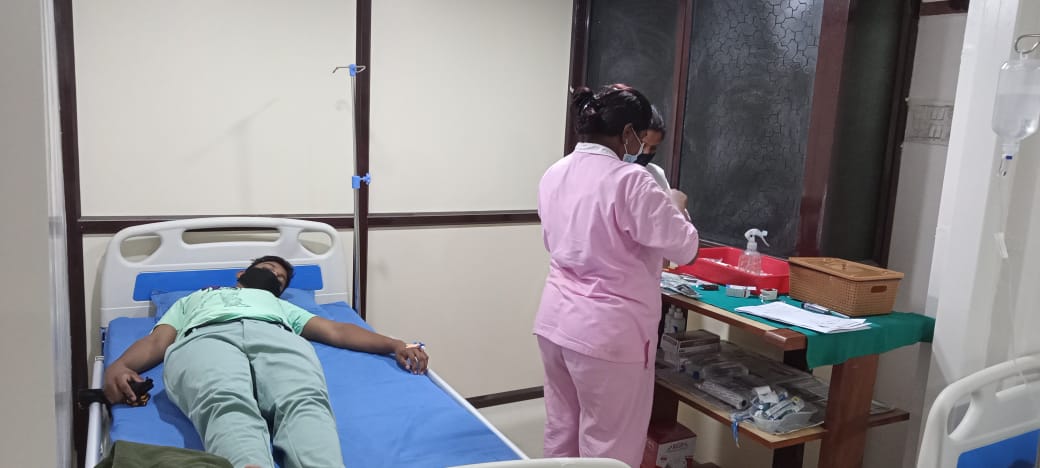
The difference between the public and private hospital near me systems is often hard to notice unless you’ve been in both. But when it comes to health care, the distinction between public and private hospital systems is no longer relevant. In this article, we’ll look at the difference between public and private hospitals based on their quality, cost, and wait time. If you’re in the market for a new hospital, it’s important to understand how these systems compare.
Quality
A recent systematic review of 80 field-based studies comparing service quality in public and private clinics found that private clinics were more efficient at providing drugs and better at responding to patients’ needs. The review did not assess other aspects of the performance of public and private hospital systems. It also excluded case reports, intervention studies, and population-level data. These limitations should be addressed in future research. This article examines the evidence of the quality of public and private hospital systems in Ghana.
Although health systems differ across European countries, there are some indications that private hospitals may outperform public hospitals. For example, Germany’s Bismarck-type system may have private hospitals on par with public hospitals, and public and private hospital systems are reimbursed in the same way. In Europe, however, there is no systematic review of the quality of public and private hospital systems. However, several studies do highlight key differences between public and private hospital systems.
Nationalization
Whether nationalizing the public and private hospital systems will improve health care quality is another matter. While a few recent reforms in the United States have attempted to do so, the results have been mixed. The United Kingdom has a health system that ranks below the OECD average and scores well below average on numerous other metrics. The OECD ranks the UK far below average on measures of health, including infant mortality rates and life expectancy. With no market incentives, quality almost always suffers.
Nationalization of the public and Malaysia private hospital systems can bring about positive changes. It would allow the government to spend more on health care. It will bring more hospital beds to cities like Chennai, which currently has 84210 beds. That’s a significant amount of extra eds and would allow the government to focus more on public health care. Besides, the nationalization of the public and private hospital systems would also allow hospitals to scale up.
Efficiency
Studies have shown that the efficiency of public and private hospital systems differs significantly. This is due in large part to the resources that hospitals possess. Generally, public hospitals have more resources than private ones. On the other hand, private hospitals are often more efficient and financially sustainable. Both public and private hospitals can be effective in providing high-quality care. Listed below are some of the differences between public and private hospital systems. They are also outlined in a table for comparison.
Inefficiencies between public and private hospital systems have led to numerous debates. Public sector costs and efficiency are often associated with perverse incentives that encourage unnecessary tests and treatments. In addition, the availability of equipment, medicines, and healthcare workers in the private sector is often limited. While unlicensed providers are often included in public hospital costs, they are excluded from private sector efficiency studies. In addition, competition between the public and private sectors leads to reductions in staff and public hospital revenues.
Cost
In comparing the costs of public and private hospital systems, the Center for American Progress analyzed public financial data from hospitals. The database, HCRIS, includes information on cost and ownership types. The analysis focused on hospitals that are not federally certified and have at least three beds. Twenty-six percent are for-profit, while the rest are nonprofit. Only 13 percent are public. In this comparison, public hospitals are less expensive than private hospitals.
In the United States, there are over 6,000 hospitals. The vast majority of these hospitals are community-owned or public. Public hospitals admit more patients than private hospitals, and their average price per patient is six times lower than in the formal for-profit sector. Private hospitals, on the other hand, are owned by individuals or groups. Although they tend to be more expensive than public hospitals, they are often favored by individuals and families because of the quality of care, low waiting times, and individualized care.
Wait times
Many public health organizations in Australia report long waiting lists for surgery. The reality, however, is much different. A recent study conducted by the IPSOS Institute found that, in the past 20 years, the average public hospital wait time had doubled. It reached 109 days, more than four times the average waiting time for private hospitals. And, while the average public hospital wait time is longer than the average private hospital wait time, the public’s perception of long waiting times was significantly shorter.
Participants in the survey did not blame doctors or nurses. Instead, they blamed the system. It seems that doctors and nurses are doing the best they can within a system with limited resources. However, they did note that longer waiting times are less acceptable for older patients and children. These factors may affect patient satisfaction. This study suggests that wait times in public hospitals are not the result of poor care, but rather of a shortage of doctors and nurses.
Partnerships
Partnerships between public and private hospital systems have several benefits, including cost savings, improved service, and innovation. Public-private partnerships can be beneficial, but they also pose certain challenges. In particular, these types of partnerships require sound regulatory arrangements to ensure that everyone receives the same level of care. This guidebook offers six customizable steps to consider when considering a PPP. This article will examine four common issues that arise when considering a PPP.
Identifying and overcoming barriers to partnerships between public and private hospital systems is essential if such initiatives are to be successful. These critical barriers include regulatory frameworks, partnership contracts, and effective mechanisms for performance monitoring. Panelists from the health sector shared their experiences with the COVID-19 pandemic and discussed ways to engage stakeholders in public-private partnerships. To help make these partnerships more successful, they identified specific challenges and provided a roadmap for success.




